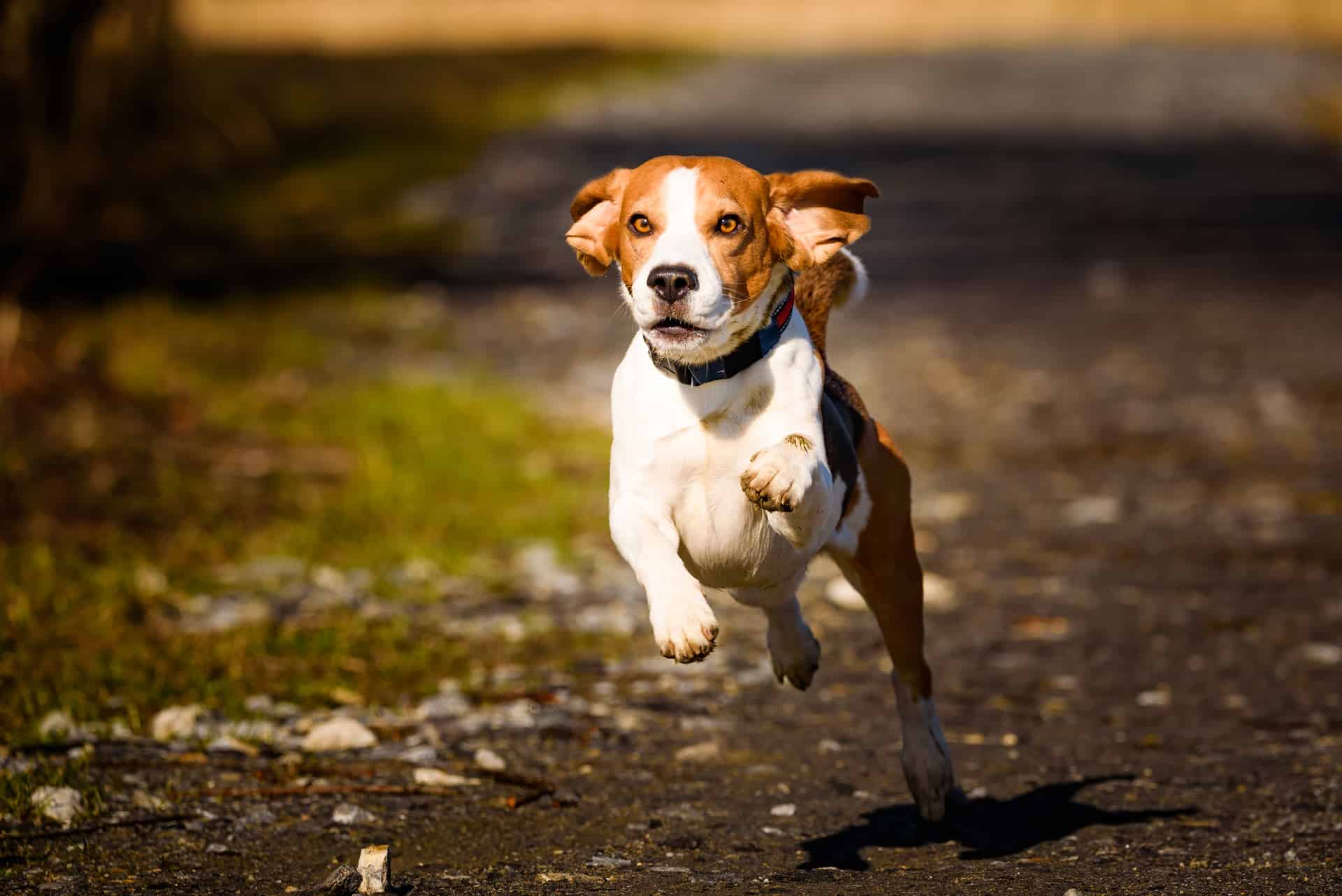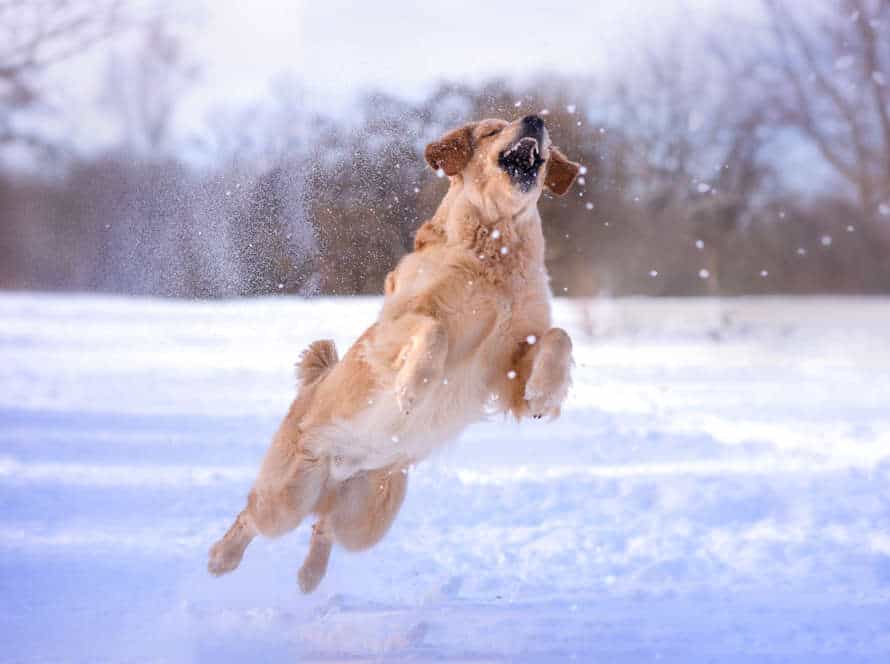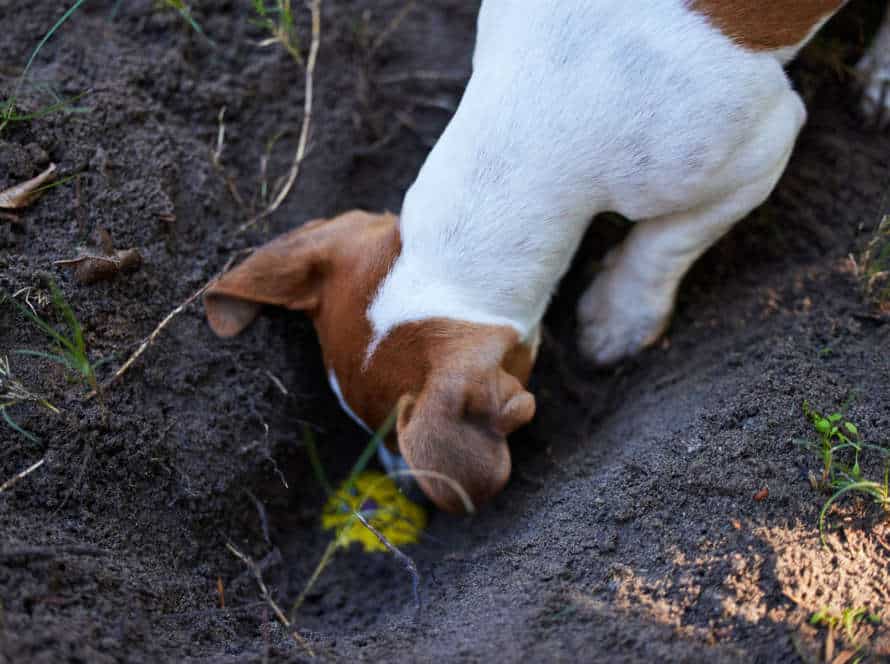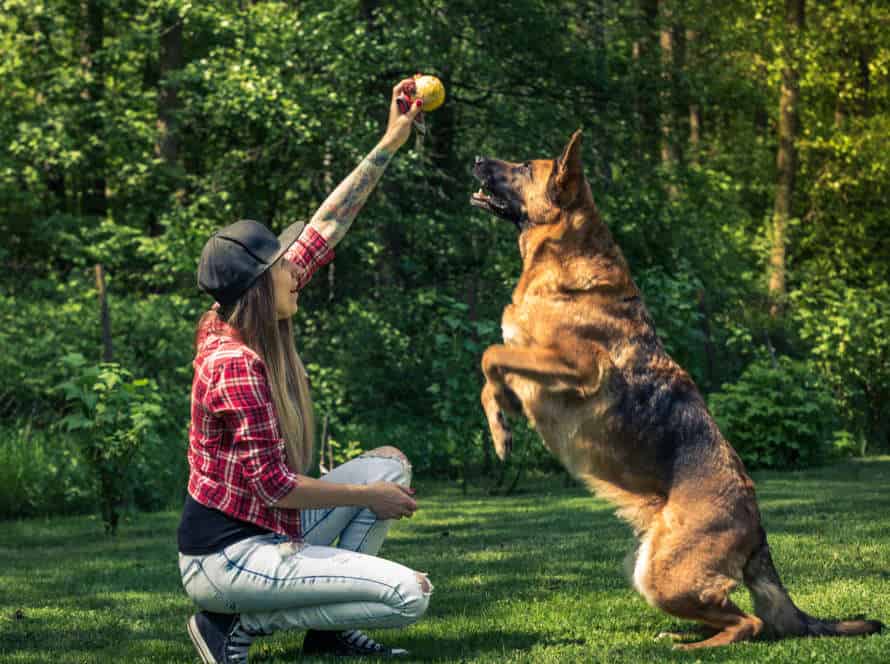Using Time-Outs Effectively to Discourage Jumping
Jumping on people? No way! That’s a common behavior problem for dogs, which can be solved by using timeouts. Here’s how:
- Say “no” firmly when your pup jumps.
- Turn away, fold your arms, and no eye contact.
- Wait ’til they calm down.
- Once they do, turn around and give them praise.
- If they jump again, repeat the process.
Consistency is everything. They’ll learn that jumping=no attention, but good behavior=rewards.
The importance of using time-outs to discourage jumping behavior
Time-outs are a great way to stop dogs from jumping. When they jump, they get put in time-out and separated from the person they jumped on. This helps them understand that jumping leads to something bad. Let’s look closer at how to use time-outs effectively to prevent jumping.
Identifying when a time-out is necessary
Jumping in dogs can be an issue. A way to stop it is with time-outs. To use time-outs, you must know when they are needed.
Signs that show a time-out is needed:
- Jumping despite verbal correction
- Being too excited and not calming down
- Jumping after getting negative attention
For using time-outs effectively, do this:
- Take your dog to a time-out spot without any attention when you spot the signs.
- Leave them there for a minute or two until they settle.
- When the time-out is done, resume play or training calmly.
- Stay consistent and persistent when using time-outs to discourage jumping.
Explaining the purpose of the time-out to the child
Time-outs can be effective when it comes to discouraging jumping behavior in young children.
Explaining the purpose of the time-out is key. Stay calm and speak in a clear, firm tone. Use simple language to explain that jumping is unsafe. Be clear about the duration of the time-out and where the child will spend it. Let the child express their questions or concerns. Explaining the purpose helps them understand why it’s important to modify their behavior. Consistency is key. Only use time-outs for specific behaviors like jumping, to show the child the consequences of their actions.
Setting up a designated time-out area
Setting up a ‘time-out area’ is a must for using timeouts successfully. It’s a great way to stop your pet, like a dog, from jumping. Here’s what to do:
- Pick a spot, maybe in a balcony or yard, outside your house.
- Say phrases like ‘Time out‘ or ‘Naughty corner‘ to make the pet understand they are being disciplined.
- Make sure the area is far from your living space. That way, they won’t get companionship or play.
- Put a comfy mat or cushion for the pet to sit on.
- Discipline them for only a little while, seconds or a minute, then let them go.
Pro tip: Be consistent with timeouts and don’t use them too much or it might make negative behavior worse.
How to implement an effective time-out
Time-outs are important to stop kids from jumping. It gives them a chance to get away and relax, helping them to chill out and think about their choices. Here are some tips to make them successful:
- Set up time-outs.
- Implement the time-outs.
Remember, they can help your child!
Putting the child in time-out consistently
Put your child in time-out regularly for it to be an effective way to stop unwanted behavior – like jumping.
Choose a calm and secure spot for the time-out. No distractions!
Explain the time-out rule simply and without getting into a fight.
When the unwanted behavior happens, tell your child calmly & firmly they’re going to time-out. Go with them without talking or looking at them.
Set a timer for the right amount of time. Usually 1-2 minutes per year of age.
After time-out, remind your child why they were there and encourage them to behave better next time.
Be consistent with time-out; use it as a consequence for bad behavior.
Pro tip: Make time-out more effective by giving clear instructions for desired behavior. Give praise and rewards for positive behavior.
Timing the time-out appropriately
Timing is key when it comes to implementing a successful time-out. To discourage jumping behavior in kids or pets, here’s how to time it right:
- Make sure the time-out spot is different from the activity. Say, a corner or a stair step.
- When the jumping happens, take the child or pet to the spot without talking.
- Set a timer to an appropriate time. For kids, 1 minute per year. For dogs, a couple of minutes.
- When the timer goes off, the kid or pet can come out without any interaction.
Timing the time-out correctly means the behavior is corrected, and there’s no confusion about the right thing to do.
Tip- Set expectations and consistently enforce the time-out rule.
Following through with the time-out consequences and discussing the behavior afterwards
Time-outs are a great way to discipline kids. But for them to be effective, you need to stay consistent and talk with your child about the behavior afterwards. Here’s how to make time-outs work for discouraging jumping:
- Pick a spot that’s free from distractions for time-outs.
- When your child jumps, tell them in a calm and firm voice that it’s not allowed. Explain they’ll get a time-out if they do it again.
- If they keep jumping, give them a time-out for one minute per year of age.
- Right after the time-out, talk to them about why jumping isn’t okay.
- Suggest an alternative behavior and encourage them to use it instead.
- Be consistent and don’t give in to demands or be lenient when they misbehave.
- Remember, time-outs aren’t punishments, but tools to teach proper behavior.
Tips for more successful time-outs
Time-outs are a useful tactic to prevent kids from leaping when they’re feeling frazzled. To ensure they’re effective, it’s important to use them correctly. Here are some tips to make time-outs more successful:
Being calm and firm during the time-out
Administering a time-out to stop jumping requires you to stay calm and firm. Here are some tips to help make it successful:
- Briefly and Firmly: Use short, but strong language when you send your pup to the time-out spot. Be confident, yet don’t yell or use physical force.
- Location: Pick a place that is away from the rest of the house and clear of anything dangerous. Great areas are bathrooms, laundry rooms, or an enclosed playpen.
- Time: Start the time-out countdown when your pup is in the location. 5-10 minutes is usually enough.
- Ending: When time is up, call your pup’s name and invite him back. Go back to the normal routine without praising or showing too much attention.
- Pro tip: Regularity is essential for a successful time-out. Be consistent with your commands, location and timing.
Using a timer to keep track of the time-out
Time-outs are a great way to stop your pup from jumping. However, you need to make sure the time-out is for the correct amount of time. A timer can be useful to track this.
Choose a quiet and isolated area with no toys for time-outs. Set the timer for about five minutes.
Give your dog one or two options that are simple to follow.
If your pup tries to leave or jumps out, lead them back and reset the timer. Don’t interact with them until the timer goes off.
A timer will help you be consistent, and will send the message about which behaviors you don’t want your pup to do.
Adjusting the time-out duration as needed
Using time-outs for discipline? It’s very important to adjust the length based on breed and behavior. Here are some tips:
- Start with 20-30 seconds and increase if needed.
- Monitor the pup’s reaction – too excited? Time-out too short. Calmed down too quickly? Too long.
- Smaller breeds need shorter time-outs than big ones.
- Remember, the goal is not punishment, but giving them a chance to chill out. For success, always supervise during time-outs.
- Pro Tip!
Common mistakes when using time-outs
Time-outs are a great way to stop kids from doing things they shouldn’t, like jumping. But to make sure they work, you have to do them right. People often mess up when using time-outs. Knowing the typical mistakes is key to making sure they are effective.
Overusing time-outs for every behavior
Many pet owners make the mistake of overusing time-outs for any behavior. But, it should be used as a last resort. Rather, use positive reinforcement such as treats, praise, or clicker training to train your pet.
Here are some tips for using time-outs effectively to discourage jumping:
- Set clear boundaries and consequences for jumping and be consistent in enforcing them.
- Have a designated area or crate for time-outs. This way your pet will learn to associate jumping with a negative outcome.
- Keep time-outs short, no more than 5-10 minutes. Avoid physical force or punishment.
Patience, consistency, and positive reinforcement are key for successful behavior modification. With time and practice, your pet will learn to follow and behave.
Allowing the child to escape the time-out area
Avoid the mistake of letting a child escape the time-out area. This can make the punishment less effective and create confusion about boundaries.
To ensure its effectiveness, here are some tips:
- Set clear rules and expectations before using time-outs as a punishment.
- Choose a quiet and unstimulating space for the time-out area.
- If a child tries to leave, calmly guide them back and explain why they’re there.
- Reduce the duration of the time-out if the child behaves properly and expresses remorse.
- Have a discussion afterwards about why their behavior was wrong and how to do better next time.
Consistency and calmness are essential for successful time-outs.
Talking excessively during the time-out
Talking too much during a time-out is a common mistake parents make when disciplining their children. They should explain their wrong-doings and direct them to the time-out space. Don’t engage in debates or lectures. Wait until the time-out is over to discuss consequences. Too much talking gives the child more attention and encourages the behaviour you want to discourage.
Pro Tip: Establish clear, age-appropriate rules before the time-out process. This creates understanding and awareness, making the time-out smoother.
Alternatives to using a time-out
Some parents use time-outs to discipline their children. But there are other options that work better! Let’s explore a few. These alternatives can help you get your child to stop jumping. We’ll also explain how to apply these techniques without damaging the relationship with your child.
Using positive reinforcement to encourage good behavior
Positive reinforcement is a great way to encourage good behavior in your pets. Avoid using punishing methods like time-outs to discourage jumping. Here are some alternatives for positive reinforcement:
- Treats: Give your pet rewards after they show any desired behavior. This will help them understand what gets them a treat.
- Toys and physical play: Use toys and playful physical interactions with your pet to encourage good behavior and give them a positive outlet for their energy.
- Verbal praise and affection: Praise them and give them physical affection, like petting and cuddling, to reinforce good behavior.
Keep in mind that positive reinforcement works best when it’s consistent and frequent. Be patient and persistent while teaching it. Pro Tip: Reward small steps towards good behavior instead of expecting too much too fast.
Diverting the child’s attention from the unwanted behavior
Time-outs can help to stop jumping in children, but they’re not the only way. Here are some other options:
- Offer a different activity – play a game, do a puzzle, paint.
- Praise them when they jump correctly.
- Explain why jumping is not okay, and what else they can do to show excitement.
These alternatives can help create a healthy, happy environment where positive behavior is encouraged.
Using logical consequences for the behavior
Logical consequences can be great for correcting bad behavior in kids. To stop jumping, parents can take the following steps:
- Have the child clean up any messes caused by jumping.
- Guide them to jump in safe places, like trampolines or play centers.
- If they keep jumping in the wrong places, take away a fun activity they love.
Logical consequences not only show the consequences of their behavior, but also equip them to manage their behavior better in the future. Time-outs are good, but not always the best answer.
Frequently Asked Questions
Q: What is a time-out?
A: A time-out is a disciplinary technique where a child or pet is removed from a situation or activity for a short period of time as a consequence for misbehavior.
Q: Can I use time-outs to discourage jumping in my pet?
A: Yes, time-outs can be an effective way to discourage jumping behavior in pets as it interrupts the behavior and removes the pet from the situation.
Q: How long should a time-out last for my pet?
A: The length of a time-out should correspond to the pet’s age or attention span, usually lasting between 30 seconds to 2 minutes.
Q: Can I use time-outs for every misbehavior?
A: Time-outs should only be used for behaviors that are disruptive or dangerous. For minor misbehavior, redirecting the pet’s attention is usually enough.
Q: Should I physically place my pet in time-out?
A: No, it is important to lead your pet to the designated time-out area calmly and without yelling or physical force.
Q: Can time-outs be used as the sole disciplinary technique for my pet?
A: No, time-outs should be used in conjunction with positive reinforcement and other disciplinary techniques to effectively discourage unwanted behavior.







